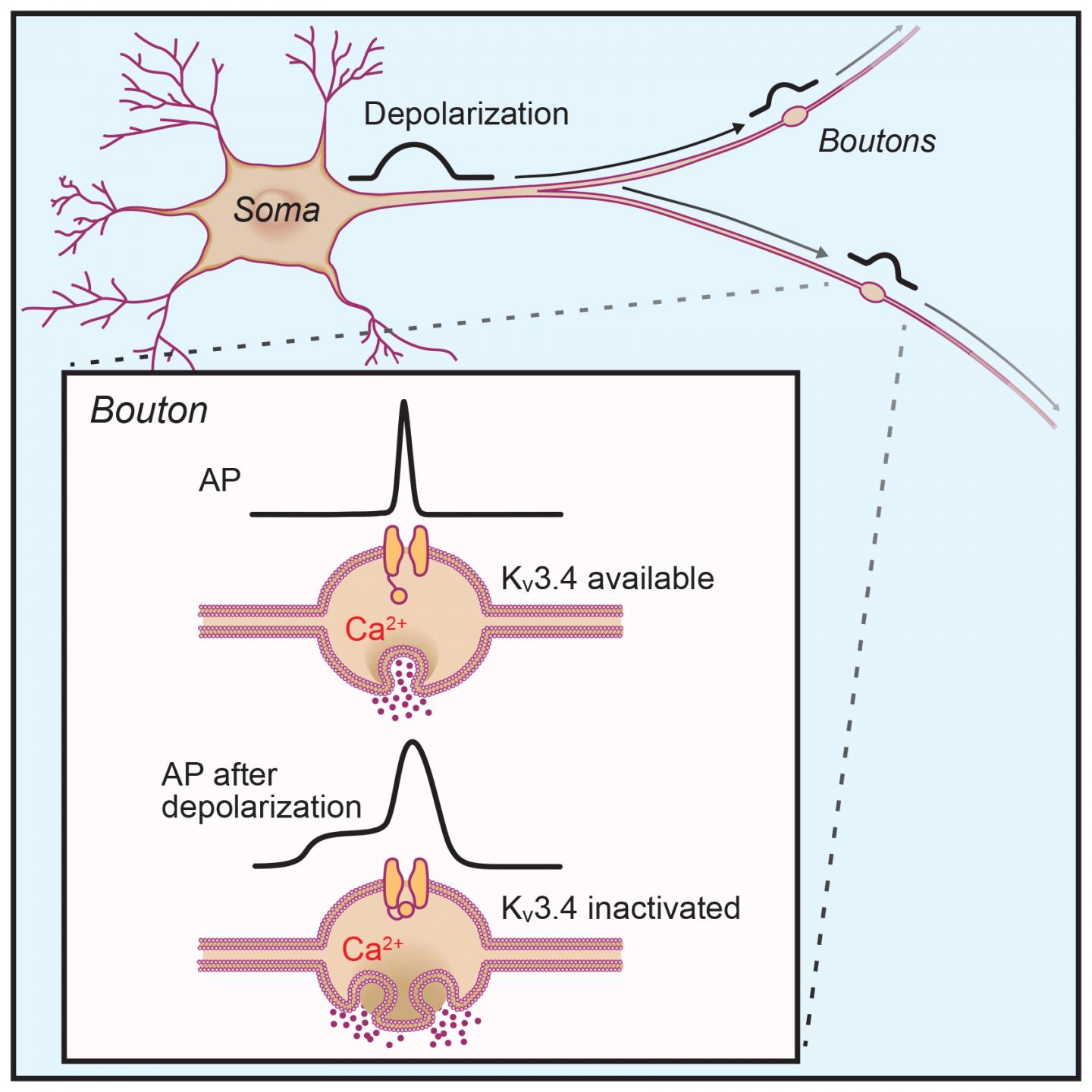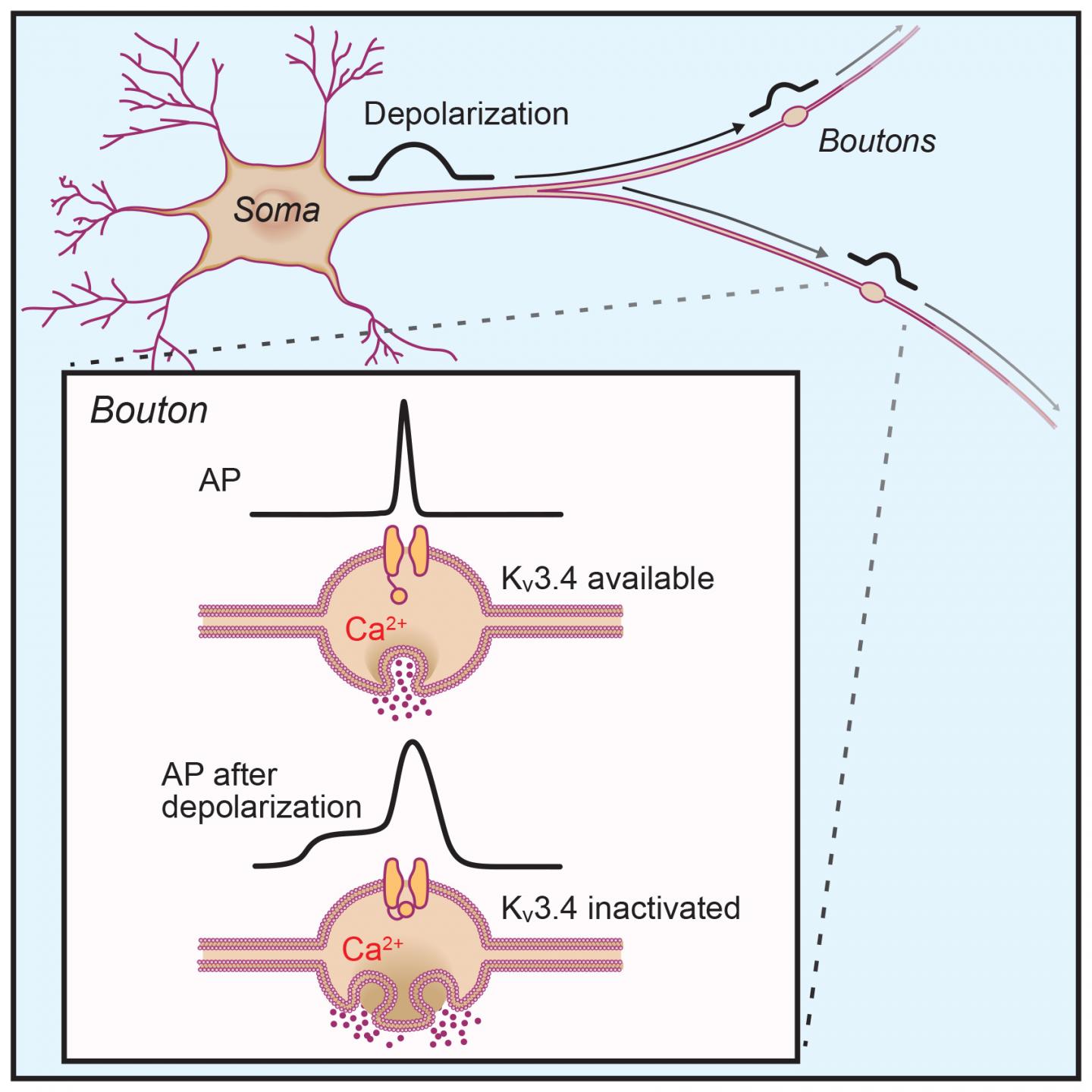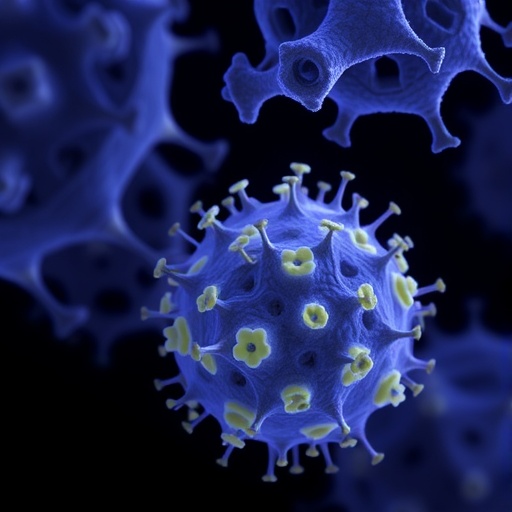
Credit: Max Planck Florida Institute for Neuroscience
In a study published in Cell Reports in February 2017, Matt Rowan, Ph.D., a Post-doctoral researcher in the lab of Dr. Jason Christie, sought to understand the molecular mechanisms behind a type of short-term neuronal plasticity that may have importance for motor control. The team showed that this type of plasticity can impact neurotransmission in as little as 100 milliseconds and depends upon inactivation of Kv3 channels. Interestingly, the team also found that this type of plasticity occurs more readily in juvenile brains than in mature ones.
Neuronal communication is frequently described simply as an all-or-nothing event. If a neuron is depolarized enough, it will fire and release neurotransmitters to communicate with another neuron; if it doesn't reach the threshold to fire, it doesn't send a signal at all. However, depolarizations that don't reach the threshold to make the neuron fire can still impact neurotransmission. The depolarization spreads throughout the neuron, and when the neuron does eventually reach the threshold to fire, it releases a stronger signal with more neurotransmitters. This is known as analog-to-digital facilitation, a type of short-term plasticity.
"This has been seen before, and we're adding a molecular mechanism showing exactly the molecule you need to get this sort of facilitation," explained Rowan.
Researchers were already aware that this type of short-term plasticity exists, but had struggled to view it directly because the axons that utilize this type of plasticity are difficult for scientists to access. This means that some of the molecular mechanisms behind the phenomenon remain mysterious. For the current study, the team used novel techniques for voltage imaging and patch clamp recordings that allowed them to visualize and record from these tiny sections of individual neurons.
The researchers observed analog-to-digital facilitation as it occurred in experimental models. They showed that subthreshold depolarization spreads from the body of the neuron down its axon, the long extension through which action potentials travel before causing the neurons to release neurotransmitters into a synapse. Here, subthreshold depolarizations impacted neurotransmission in the juvenile models by briefly making Kv3.4 channel unavailable thereby increasing the duration of the presynaptic spike. The fact that the group observed less of this same plasticity in mature models suggests that learning and experience may temper this type of plasticity as an animal matures.
The team chose to study inhibitory interneurons in the cerebellum because they play an especially important role in the function of circuits throughout the cerebellum as well as the rest of the brain. Understanding this type of neuronal plasticity may have important implications for understanding motor disorders such as cerebellar ataxia, a disorder that can cause a variety of motor problems in humans ranging from increased falling to difficulty with speech and swallowing.
###
This work was supported by the National Institutes of Health (NS083127 and NS083894) and funding from The Max Planck Florida Institute for Neuroscience and the Max Planck Society.
About MPFI
The Max Planck Florida Institute for Neuroscience (Jupiter, Florida, USA) specializes in the development and application of novel technologies for probing the structure, function, and development of neural circuits. It is the first research institute of the Max Planck Society in the United States.
Media Contact
Jennifer Gutierrez
[email protected]
@mpfneuro
http://www.maxplanckflorida.org/
############
Story Source: Materials provided by Scienmag





